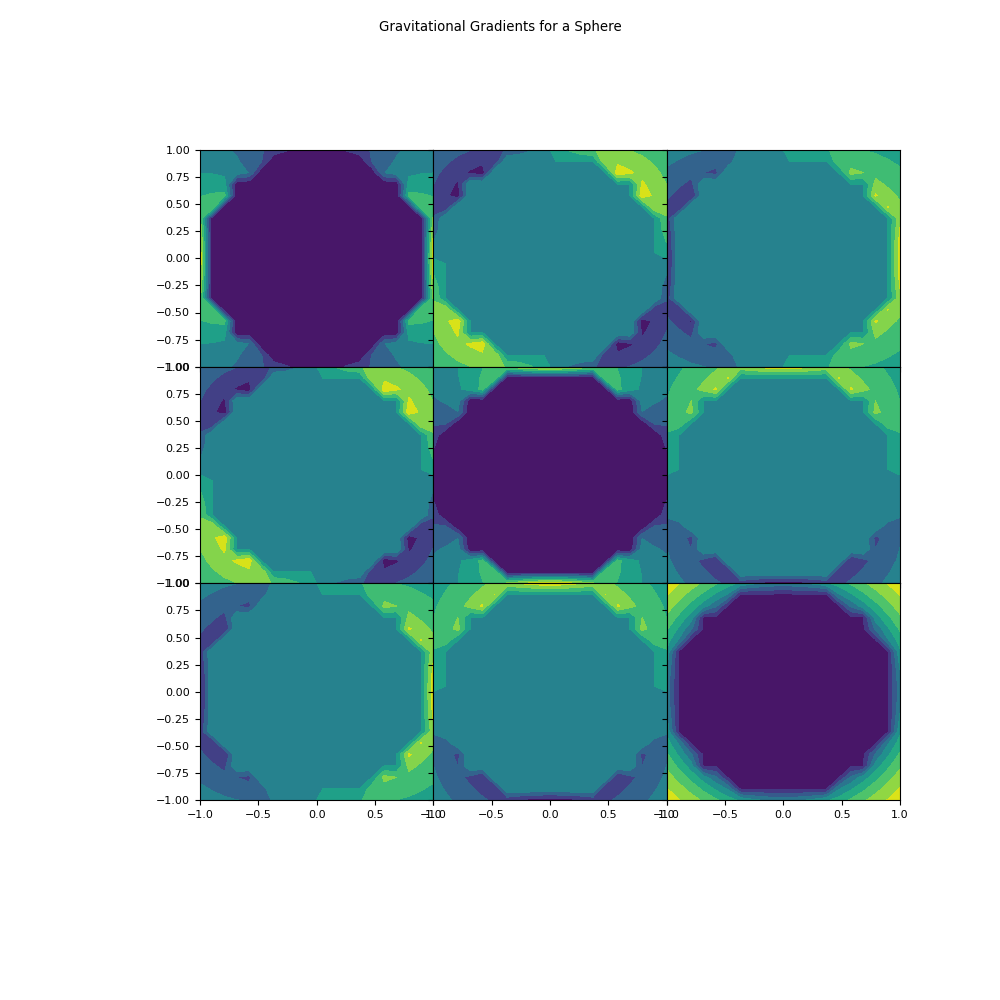geoana.gravity.Sphere.gravitational_gradient#
- Sphere.gravitational_gradient(xyz)#
Gravitational gradient for a sphere.
\[ \begin{align}\begin{aligned}r < R\\\mathbf{T} (\mathbf{r}) = -\gamma \frac{4}{3} \pi \rho \mathbf{I}\end{aligned}\end{align} \]- Parameters:
- xyz(…, 3) numpy.ndarray
Locations to evaluate at in units m.
- Returns:
- (…, 3, 3) numpy.ndarray
Gravitational gradient at sphere location xyz in units \(\frac{1}{s^2}\).
Examples
Here, we define a sphere with mass m and plot the gravitational gradient.
>>> import numpy as np >>> import matplotlib.pyplot as plt >>> from geoana.gravity import Sphere
Define the sphere.
>>> location = np.r_[0., 0., 0.] >>> rho = 1.0 >>> radius = 1.0 >>> simulation = Sphere( >>> location=location, rho=rho, radius=radius >>> )
Now we create a set of gridded locations and compute the gravitational gradient.
>>> X, Y = np.meshgrid(np.linspace(-1, 1, 20), np.linspace(-1, 1, 20)) >>> Z = np.zeros_like(X) + 0.25 >>> xyz = np.stack((X, Y, Z), axis=-1) >>> g_tens = simulation.gravitational_gradient(xyz)
Finally, we plot the gravitational gradient for each element of the 3 x 3 matrix.
>>> fig = plt.figure(figsize=(10, 10)) >>> gs = fig.add_gridspec(3, 3, hspace=0, wspace=0) >>> (ax1, ax2, ax3), (ax4, ax5, ax6), (ax7, ax8, ax9) = gs.subplots(sharex='col', sharey='row') >>> fig.suptitle('Gravitational Gradients for a Sphere') >>> ax1.contourf(X, Y, g_tens[:,:,0,0]) >>> ax2.contourf(X, Y, g_tens[:,:,0,1]) >>> ax3.contourf(X, Y, g_tens[:,:,0,2]) >>> ax4.contourf(X, Y, g_tens[:,:,1,0]) >>> ax5.contourf(X, Y, g_tens[:,:,1,1]) >>> ax6.contourf(X, Y, g_tens[:,:,1,2]) >>> ax7.contourf(X, Y, g_tens[:,:,2,0]) >>> ax8.contourf(X, Y, g_tens[:,:,2,1]) >>> ax9.contourf(X, Y, g_tens[:,:,2,2]) >>> plt.show()
(
Source code,png,pdf)